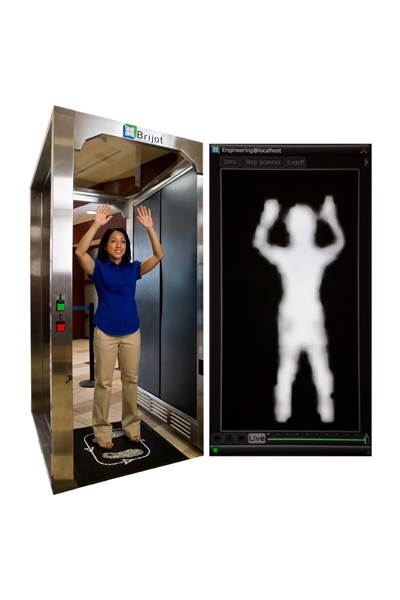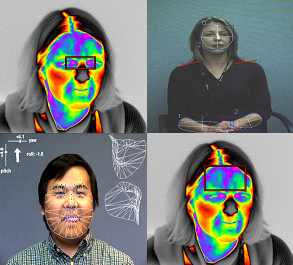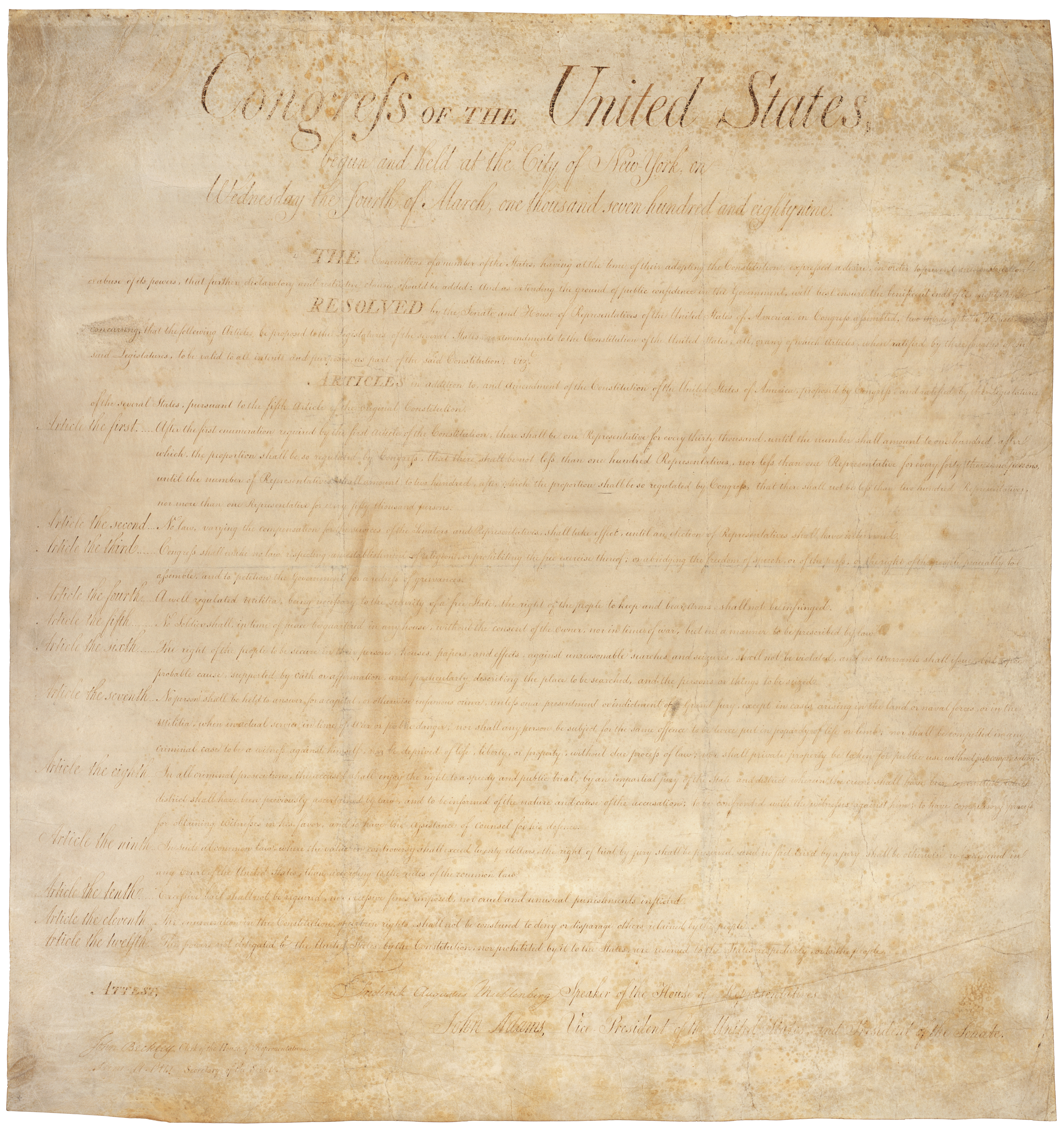|
Airport Privacy
Airport privacy involves the right of personal privacy for passengers when it comes to screening procedures, surveillance, and personal data being stored at airports. This practice intertwines airport security measures and privacy specifically the advancement of security measures following the 9/11 attacks in the United States and other global terrorist attacks. Several terrorist attacks, such as 9/11, have led airports all over the world to look to the advancement of new technology such as body and baggage screening, detection dogs, Facial recognition system, facial recognition, and the use of biometrics in electronic passports. Amidst the introduction of new technology and security measures in airports and the growing rates of travelers there has been a rise of risk and concern in privacy. History of airport policies Before the 9/11 terrorist attacks, the only security measure in place in U.S. airports were metal detectors. A metal detector's ability to only detect metal weapons ... [...More Info...] [...Related Items...] OR: [Wikipedia] [Google] [Baidu] |
Airport Security
Airport security includes the techniques and methods used in an attempt to protect passengers, staff, aircraft, and airport property from malicious harm, crime, terrorism, and other threats. Aviation security is a combination of measures and human and material resources in order to safeguard civil aviation against acts of unlawful interference. Unlawful interference could be acts of terrorism, sabotage, threat to life and property, communication of false threat, bombing, etc. Description Large numbers of people pass through airports every day. This presents potential targets for terrorism and other forms of crime because of the number of people located in one place. Similarly, the high concentration of people on large airliners increases the potentially high death rate with attacks on aircraft, and the ability to use a hijacked airplane as a lethal weapon may provide an alluring target for terrorism (such as during the September 11 attacks). Airport security attempts to prevent ... [...More Info...] [...Related Items...] OR: [Wikipedia] [Google] [Baidu] |
SPOT (TSA Program)
BDA (which stands for Behavior Detection and Analysis), until 2016 called SPOT (which stood for Screening of Passengers by Observation Techniques), is a program launched in the United States by the Transportation Security Administration to identify potential terrorists among people at an airport by a set of 94 objective criteria, all of which are signs for either stress, fear, or deception. Passengers meeting enough of the criteria are, under the program, referred for a patdown and additional screening. The criteria were initially secret, but in March 2015, ''The Intercept'' published them after obtaining the information from an anonymous source. History The TSA began training agents in the program in 2006, in response to the liquid bomb plot in Britain earlier that year, and officially began the program at airports across the U.S. in 2007. As of 2013, none of the few arrests that had resulted from the program had been for terrorism or related charges. Originally, the program was ba ... [...More Info...] [...Related Items...] OR: [Wikipedia] [Google] [Baidu] |
Homeland Security
Homeland security is an American national security term for "the national effort to ensure a homeland that is safe, secure, and resilient against terrorism and other hazards where American interests, aspirations, and ways of life can thrive" to the "national effort to prevent terrorist attacks within the United States, reduce the vulnerability of the U.S. to terrorism, and minimize the damage from attacks that do occur." According to an official work published by the Congressional Research Service in 2013, the "Homeland security" term's definition has varied over time. Homeland security is not constrained to terrorist incidents. Terrorism is violent, criminal acts committed by individuals and/or groups to further ideological goals stemming from influences, such as those of a political, religious, social, racial, or environmental nature. Within the US, an all-hazards approach exists regarding homeland security endeavors. In this sense, homeland security encompasses both natural d ... [...More Info...] [...Related Items...] OR: [Wikipedia] [Google] [Baidu] |
Automated Border Control System
Automated border control systems (ABC) or eGates are automated self-service barriers which use data stored in a chip in biometric passports along with a photo or fingerprint taken at the time of entering the eGates to verify the passport holder's identity. Travellers undergo biometric verification using facial or iris recognition, fingerprints, or a combination of modalities. After the identification process is complete and the passport holder's identity is verified, a physical barrier such as a gate or turnstile opens to permit passage. If the passport holder's identification is not verified or if the system malfunctions, then the gate or turnstile does not open and an immigration officer will meet the person. E-gates came about in the mid-2000s as an automated method of reading the then-newly ICAO mandated e-passports. All eGate systems require an e-passport that is machine readable. Some countries permit only specific nationalities to use the automated border crossing systems, ... [...More Info...] [...Related Items...] OR: [Wikipedia] [Google] [Baidu] |
Full Body Scanner
A full-body scanner is a device that detects objects on or inside a person's body for security screening purposes, without physically removing clothes or making physical contact. Unlike metal detectors, full-body scanners can detect non-metal objects, which became an increasing concern after various airliner bombing attempts in the 2000s and some scanners can also detect swallowed items or hidden in body cavities of a person. Starting in 2007, full-body scanners started supplementing metal detectors at airports and train stations in many countries. Three distinct technologies have been used in practice: * ''Millimeter wave scanners'' use non-ionizing electromagnetic radiation similar to that used by wireless data transmitters, in the extremely high frequency (EHF) radio band (which is a lower frequency than visible light). The health risks posed by these machines are still being studied, and the evidence is mixed, though millimeter wave scanners do not generate ionizing radiat ... [...More Info...] [...Related Items...] OR: [Wikipedia] [Google] [Baidu] |
Biometric Passport
A biometric passport (also known as an e-passport or a digital passport) is a traditional passport that has an embedded electronic microprocessor chip which contains biometric information that can be used to authenticate the identity of the passport holder. It uses contactless smart card technology, including a microprocessor chip (computer chip) and antenna (for both power to the chip and communication) embedded in the front or back cover, or centre page, of the passport. The passport's critical information is printed on the data page of the passport, repeated on the machine readable lines and stored in the chip. Public key infrastructure (PKI) is used to authenticate the data stored electronically in the passport chip, making it expensive and difficult to forge when all security mechanisms are fully and correctly implemented. Many countries are moving towards issuing biometric passports to their citizens. Malaysia was the first country to issue biometric passports in 1998. I ... [...More Info...] [...Related Items...] OR: [Wikipedia] [Google] [Baidu] |
September 11 Attacks
The September 11 attacks, commonly known as 9/11, were four coordinated suicide terrorist attacks carried out by al-Qaeda against the United States on Tuesday, September 11, 2001. That morning, nineteen terrorists hijacked four commercial airliners scheduled to travel from the Northeastern United States to California. The hijackers crashed the first two planes into the Twin Towers of the World Trade Center in New York City, and the third plane into the Pentagon (the headquarters of the United States military) in Arlington County, Virginia. The fourth plane was intended to hit a federal government building in Washington, D.C., but crashed in a field following a passenger revolt. The attacks killed nearly 3,000 people and instigated the war on terror. The first impact was that of American Airlines Flight 11. It was crashed into the North Tower of the World Trade Center complex in Lower Manhattan at 8:46 a.m. Seventeen minutes later, at 9:03, the World Trade Center’s S ... [...More Info...] [...Related Items...] OR: [Wikipedia] [Google] [Baidu] |
Airport Security
Airport security includes the techniques and methods used in an attempt to protect passengers, staff, aircraft, and airport property from malicious harm, crime, terrorism, and other threats. Aviation security is a combination of measures and human and material resources in order to safeguard civil aviation against acts of unlawful interference. Unlawful interference could be acts of terrorism, sabotage, threat to life and property, communication of false threat, bombing, etc. Description Large numbers of people pass through airports every day. This presents potential targets for terrorism and other forms of crime because of the number of people located in one place. Similarly, the high concentration of people on large airliners increases the potentially high death rate with attacks on aircraft, and the ability to use a hijacked airplane as a lethal weapon may provide an alluring target for terrorism (such as during the September 11 attacks). Airport security attempts to prevent ... [...More Info...] [...Related Items...] OR: [Wikipedia] [Google] [Baidu] |
Supremacy Clause
The Supremacy Clause of the Constitution of the United States ( Article VI, Clause 2) establishes that the Constitution, federal laws made pursuant to it, and treaties made under its authority, constitute the "supreme Law of the Land", and thus take priority over any conflicting state laws. It provides that state courts are bound by, and state constitutions subordinate to, the supreme law. However, federal statutes and treaties must be within the parameters of the Constitution; that is, they must be pursuant to the federal government's enumerated powers, and not violate other constitutional limits on federal power, such as the Bill of Rights—of particular interest is the Tenth Amendment to the United States Constitution, which states that the federal government has only those powers delegated to it by the Constitution. The Supremacy Clause is essentially a conflict-of-laws rule specifying that certain federal acts take priority over any state acts that conflict with fede ... [...More Info...] [...Related Items...] OR: [Wikipedia] [Google] [Baidu] |
Tenth Amendment To The United States Constitution
The Tenth Amendment (Amendment X) to the United States Constitution, a part of the Bill of Rights, was ratified on December 15, 1791. It expresses the principle of federalism, also known as states' rights, by stating that the federal government has only those powers delegated to it by the Constitution, and that all other powers not forbidden to the states by the Constitution are reserved to each state. The amendment was proposed by the 1st United States Congress in 1789 during its first term following the adoption of the Constitution. It was considered by many members as a prerequisite before they would ratify the Constitution, and particularly to satisfy demands of Anti-Federalists, who opposed the creation of a stronger federal government. The purpose of this amendment is to clarify how the federal government's powers should be interpreted and to reaffirm the nature of federalism. Justices and commentators have publicly wondered whether the Tenth Amendment retains any leg ... [...More Info...] [...Related Items...] OR: [Wikipedia] [Google] [Baidu] |
Global Entry
Global Entry is a program of the U.S. Customs and Border Protection service that allows pre-approved, low-risk travelers to receive expedited clearance upon arrival into the United States through automatic kiosks at select airports and via the SENTRI and NEXUS lanes by land and sea. , Global Entry was available at 53 U.S. airports and 15 preclearance locations. By April 2018 more than 5 million people were enrolled in Global Entry and approximately 50,000 new applications for the program were being filed monthly. History During the 1990s and early 2000s, the US Immigration and Naturalization Service operated INSPASS, a trusted traveler program designed to integrate with Canadian and European programs, at JFK and Newark Airports. INSPASS operated with a similar system, identifying travelers with their handprint. The program was discontinued in 2002 when the INS was merged with U.S. Customs to form U.S. Customs and Border Protection. The Global Entry program was initially deployed ... [...More Info...] [...Related Items...] OR: [Wikipedia] [Google] [Baidu] |
Biometrics
Biometrics are body measurements and calculations related to human characteristics. Biometric authentication (or realistic authentication) is used in computer science as a form of identification and access control. It is also used to identify individuals in groups that are under surveillance. Biometric identifiers are the distinctive, measurable characteristics used to label and describe individuals. Biometric identifiers are often categorized as physiological characteristics which are related to the shape of the body. Examples include, but are not limited to fingerprint, palm veins, face recognition, DNA, palm print, hand geometry, iris recognition, retina, odor/scent, voice, shape of ears and gait. Behavioral characteristics are related to the pattern of behavior of a person, including but not limited to mouse movement, typing rhythm, gait, signature, behavioral profiling, and credentials. Some researchers have coined the term behaviometrics to describe the latter class ... [...More Info...] [...Related Items...] OR: [Wikipedia] [Google] [Baidu] |






